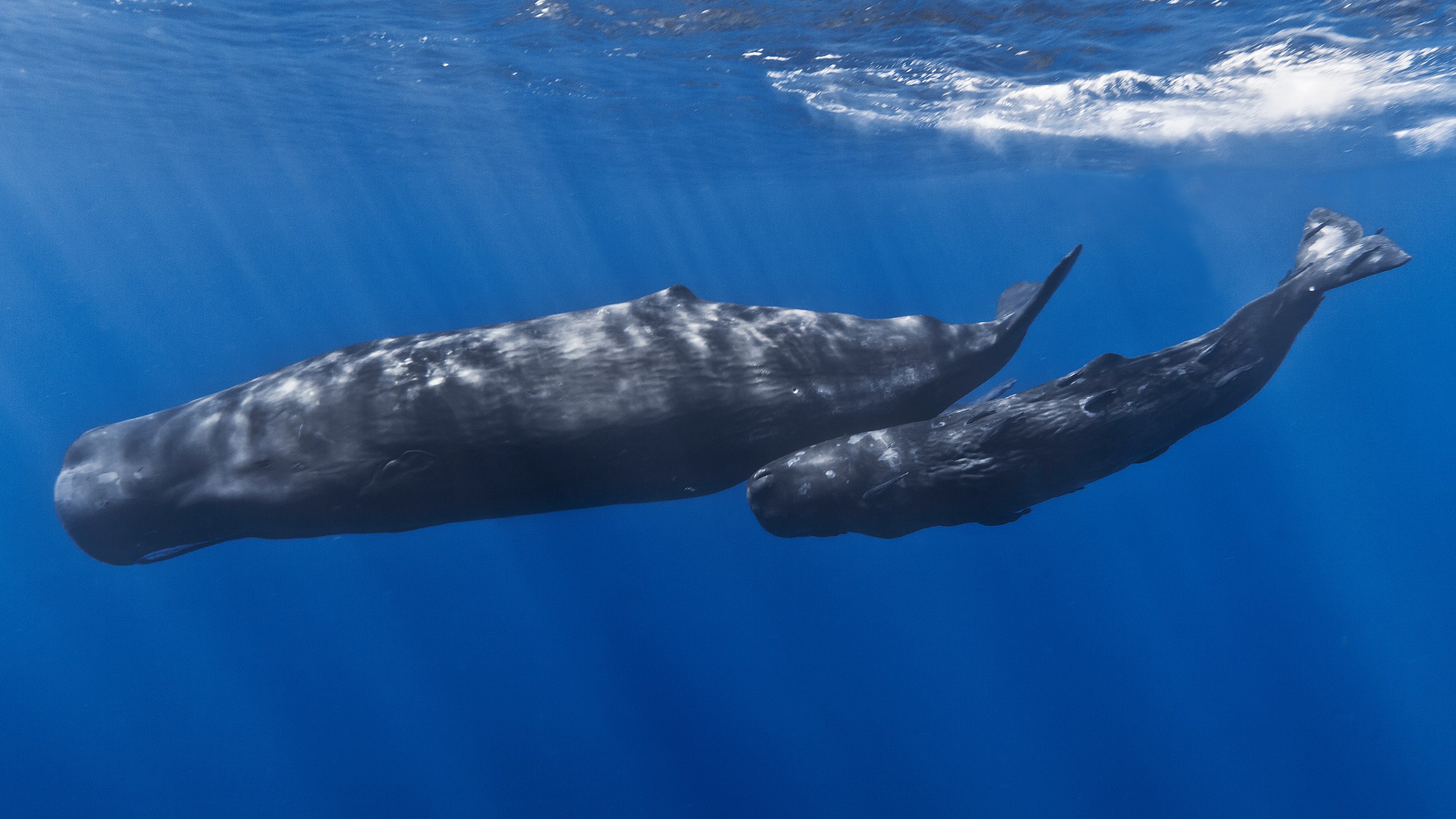Do You Speak “Whale”? How Whales Talk and Develop Dialects
Do You Speak “Whale”? How Whales Talk and Develop Dialects
For a long time, we humans believed that language is only human. But did you know that whales have dialects, a culture, and an individual identity?
Whales and other sea mammals have developed a highly complex communication system, that has pushed some to describe it as a “language”. According to journalist and freediver James Nestor, sea mammals “have a form of communication that is far more sophisticated than ours”[1] – and the level of complexity whale vocalization has reached is indeed impressive.
As they live in water – where sound travels four times higher than in air – these animals mostly rely on sounds to communicate. The sounds vary from one species to the other. They can (very) roughly be divided into three categories, with different social functions: songs, clicks and calls. As Nestor underlines, these utterances are not simple at all; in fact, some whales can produce as much as 1,600 microclicks in one second.
Names, dialects and culture
Songs are repetitive patterns of sounds that can last up to 20 minutes. Male humpback whales perform them during the mating season – probably to help mate selection. Songs change according to the generation and the region and are socially acquired: in other words, whales have dialects. Similarly, sperm whales with similar behaviour tend to assimilate each other’s vocalizations, giving rise to clans that can last decades. In the end, each clan has a distinct series of click that members use to communicate. As incredible as it sounds, this social learning process may be considered as a form of culture – or a shared group behaviour.
Even more surprisingly, some researchers suggest that rhytmic sequences of click sounds made by sperm whales and dolphins have the function of communicating their individual identity to the rest of the group – very much like a name.
While we are able to understand many of the social functions performed by songs and clicks, calls are more cryptic. As opposed to songs, calls are “universal” among humpback whales. They persist over decades, and they are the same across very distant groups of whales across the ocean. They are not only used during the mating season, and they are performed by males, females and juveniles alike. These findings suggest that calls – just like for humans – have a fundamental function in sustaining whale societies, but how this works precisely is still unknown.
So do whales have a real language? Nobody knows. But their communication has linguistic sophistication, dialects, collective and individual identity expression, and a structural social function. Not so different from humans, after all.
Adaptation
The complexity of whale “language” goes hand in hand with a surprising ability for linguistic adaptation. Cases have been reported of whales imitating human sounds and dolphin whistles. In one case, the imitation was so realistic that a diver swimming alongside a captive whale came to the surface asking the people around him – “Who told me to get out”?
Unfortunately, whales also have to adapt to the harmful noise effects of human activities, such as the use of ships, sonars and marine seismic surveys. Researches have found that whales actually adjust their songs to background noise pollution. However, human-made noise – together with whale hunting – still threatens the survival of these highly intelligent creatures.
______________________________
Join us or come take a look!
We are a group of people convinced that language skills should be valued. That is why we created Kolimi, the first international social network connecting multilingual professionals from all fields of work to the people who need their services.
Join us to find new opportunities, or follow us on Facebook, Twitter, YouTube or LinkedIn to discover new things about languages!
______________________________







